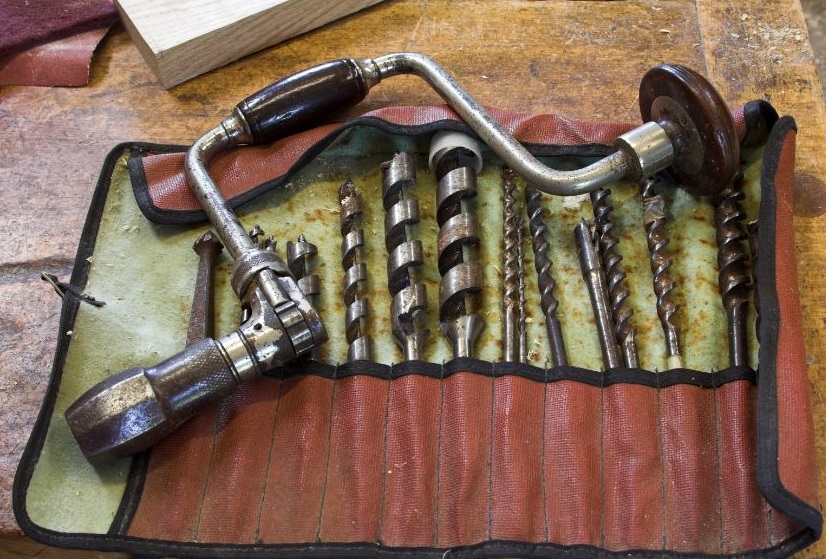
The joiner’s brace and bit is a vintage woodworking tool that has left an indelible mark on the craft of joinery and carpentry in the UK. Combining simplicity, precision, and versatility, this timeless instrument has been an essential companion to woodworkers for centuries, allowing them to drill holes with speed and accuracy in a wide range of materials. From constructing furniture and cabinetry to shaping timber frames and joinery components, the joiner’s brace and bit has played a crucial role in countless woodworking projects, earning its place as an iconic symbol of craftsmanship and tradition.
The joiner’s brace itself is a hand-operated drilling tool consisting of a U-shaped frame with a rotating handle at one end and a chuck at the other. The handle, typically made of wood or metal, provides a comfortable grip for the user and allows them to exert downward pressure while turning the brace. The chuck, located at the tip of the brace, holds interchangeable drill bits of various sizes and types, allowing woodworkers to select the appropriate tool for the task at hand.
The drill bits used with the joiner’s brace are known as “bits,” and they come in a variety of shapes and sizes to accommodate different drilling needs. The most common type of bit is the auger bit, which features a spiral-shaped blade that cuts into the wood as the brace is turned. Auger bits are highly efficient and versatile, making them ideal for drilling clean, precise holes in both softwoods and hardwoods.
One of the key advantages of the joiner’s brace and bit is its simplicity and ease of use. Unlike modern power drills, which rely on electricity or batteries to operate, the joiner’s brace is entirely manual, requiring only the strength and dexterity of the user to drive the drill bit into the workpiece. This simplicity not only makes the tool more accessible to woodworkers of all skill levels but also allows for greater control and precision when drilling holes.
Moreover, the joiner’s brace and bit offer several distinct advantages over their modern counterparts, particularly in terms of versatility and durability. Unlike power drills, which are limited by their size, weight, and power source, the joiner’s brace can be used in virtually any location and orientation, making it ideal for working in tight spaces or on awkwardly shaped workpieces. Additionally, because the tool has no complex moving parts or electronic components, it is less prone to mechanical failure or malfunctions, ensuring reliable performance even in the harshest of working conditions.
In addition to its practical utility, the joiner’s brace and bit hold a deeper significance as symbols of tradition and craftsmanship in the UK. Throughout the centuries, generations of woodworkers have relied on this timeless tool to create some of the nation’s most iconic structures and furnishings, from Tudor-era timber-framed houses to Victorian-era furniture and millwork. The joiner’s brace and bit embody the spirit of craftsmanship and dedication that have characterized the UK’s woodworking tradition, serving as a tangible link to the past and a source of inspiration for future generations of woodworkers.
Furthermore, the joiner’s brace and bit offer a unique and immersive woodworking experience that is unmatched by modern power tools. As woodworkers wield the brace and feel the satisfying resistance of the drill bit biting into the wood, they are transported back in time to an era when craftsmanship was a labor of love and precision was achieved through skill and patience. This hands-on approach to woodworking not only fosters a deeper appreciation for the craft but also allows woodworkers to develop their skills and techniques in ways that are simply not possible with automated tools.
The joiner’s brace and bit stand as timeless symbols of tradition, craftsmanship, and ingenuity in the UK woodworking tradition. From their simple yet effective design to their unmatched versatility and durability, these iconic tools have played a vital role in shaping the nation’s architectural heritage and cultural identity. As woodworkers continue to embrace the joiner’s brace and bit as a staple of their craft, they honor the legacy of those who came before them and ensure that the art of joinery and carpentry remains alive and vibrant for generations to come.